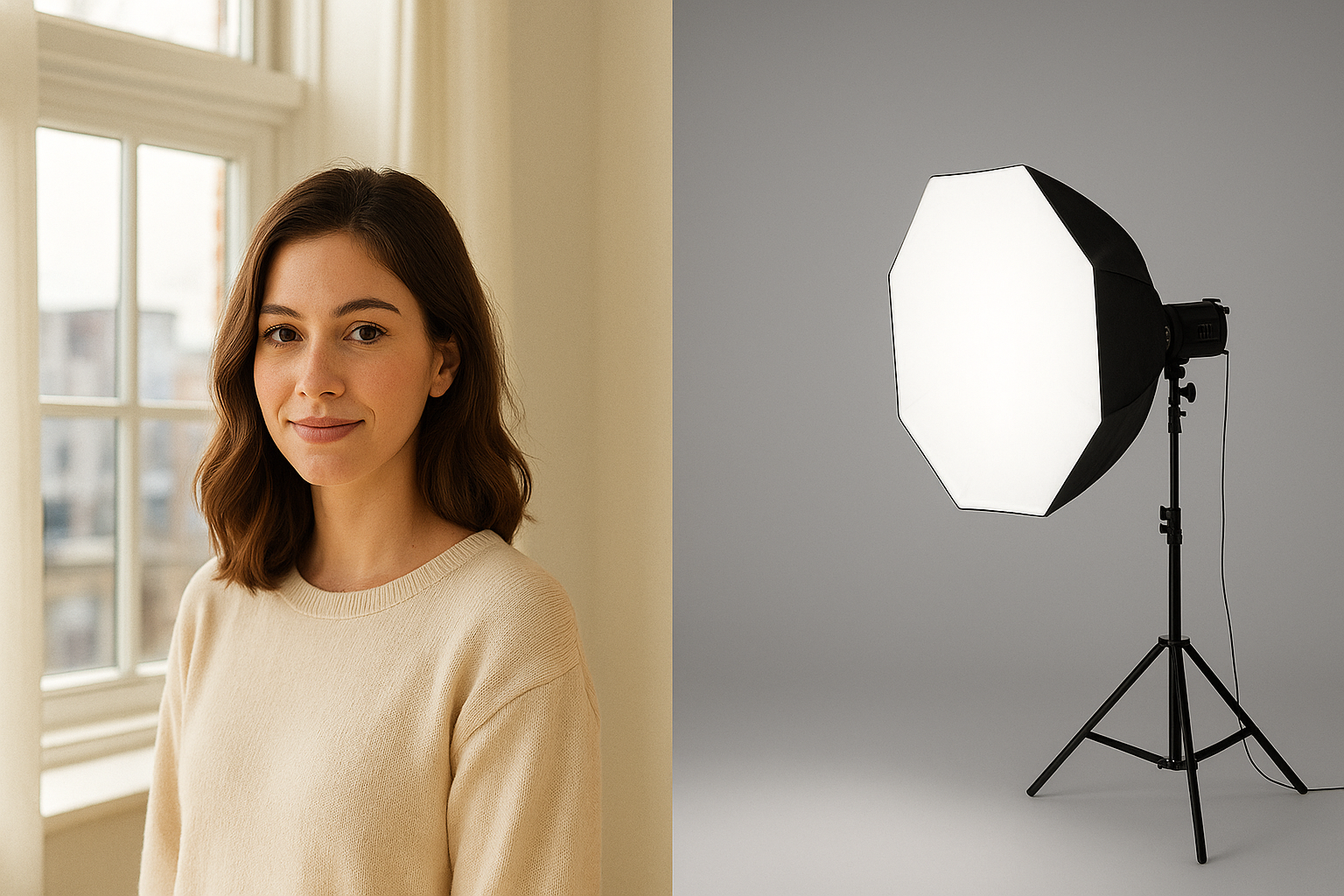Lighting is one of the fundamental pillars of photography. Without light, there is simply no image. That’s why mastering different light sources and knowing when to use each one is a major key to taking stunning photos—whether you’re using a professional camera or a smartphone.
Among the available options, two stand out: natural light, usually from the sun, and artificial light, generated by equipment like lamps, softboxes, and flashes. But after all, which one is better for your photos? The answer isn’t that simple, as it depends on the desired style, the environment, and the equipment available.
What Is Natural Light?
Natural light is any source of illumination that doesn’t rely on man-made devices, with the sun being the main reference. It can be used indoors or outdoors and changes character throughout the day. Shooting in the early morning, at noon, or during sunset produces completely different results.
Benefits of Natural Light:
- Free of cost: You don’t need to invest in equipment.
- Soft quality: During sunrise and sunset, the light is diffused, soft, and pleasing.
- Realistic atmosphere: It gives a more natural and authentic feel to images.
- Beginner-friendly: Many beginner photographers learn using only daylight.
Drawbacks of Natural Light:
- Weather dependency: Cloudy or rainy days can drastically affect lighting.
- Lack of control: The intensity and direction of the light change constantly.
- Time constraints: To catch the best light, you need to be in the right place at the right time.
What About Artificial Light?
Artificial light is produced by human-made sources such as light bulbs, LEDs, ring lights, flashes, and softboxes. It’s widely used in studios, events, and even at home by content creators.
Advantages of Artificial Light:
- Total control: You can adjust the intensity, direction, and color temperature.
- Consistency: Ideal for long or repeated sessions.
- Creative freedom: Allows for specific effects, scenes, and atmospheres.
- Independence from weather or time: You can shoot at night or on cloudy days without issues.
Challenges of Artificial Light:
- Cost: High-quality equipment can be expensive.
- Learning curve: It can be harder to master at first.
- Risk of harsh results: If misused, it may create hard shadows or blown-out highlights.
When Should You Use Natural Light?
Natural light is ideal for:
- Outdoor photography, like nature, street portraits, or architecture;
- Lifestyle sessions, where realism and spontaneity are desired;
- Travel photos, leveraging the natural ambiance;
- Social media content, especially when relying on window light.
Pro Tip:
The famous Golden Hour—shortly after sunrise and before sunset—is perfect for capturing warm tones, soft shadows, and a magical glow in your images.
When Should You Use Artificial Light?
Artificial lighting is essential in situations like:
- Studio photography, where full control is required;
- Product photography, for standardized and sharp images;
- Night photography, when natural light is unavailable;
- Creative shoots, involving color effects or dramatic shadows;
- Indoor events, such as weddings and parties.
Artificial light can also simulate natural light when used properly, resulting in very realistic photos even in a controlled environment.
Can You Combine Both?
Yes—and this is one of the most advanced and powerful techniques in photography: mixing natural and artificial light. For example, you can use sunlight as the key light and add a flash or LED to fill in shadows.
This hybrid method gives you the best of both worlds: natural ambiance with controlled enhancement.
So, Which One Is Better: Natural or Artificial?
The truth is: there’s no one-size-fits-all answer. The best light depends on your photography style, the desired outcome, and the situation. A creative photographer should learn to work with both and understand the pros and cons of each.
If you’re just starting out, go with natural light—it’s free, easy to find, and can yield stunning results. As you progress, explore artificial lighting to expand your creative and professional possibilities.
The Key Lies in Knowledge and Practice
Mastering light in photography comes down to knowledge and constant experimentation. Observe how light behaves at different times of day, how it reflects on surfaces, and how it sets the mood of an image. Study the use of shadows, contrast, and angles. Experiment with artificial lighting and watch how it transforms your results.
Photography is, above all, the art of painting with light. And the more you understand this essential element, the more your photos will stand out.











